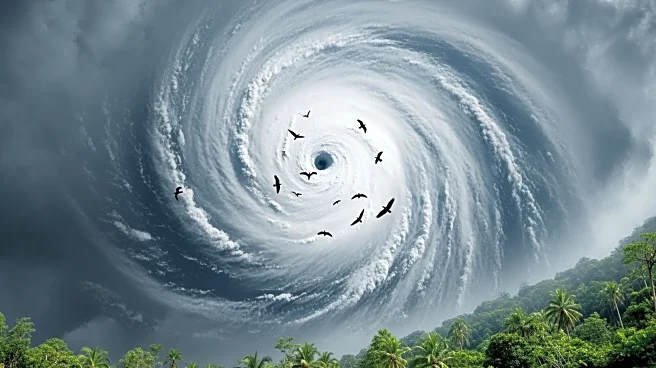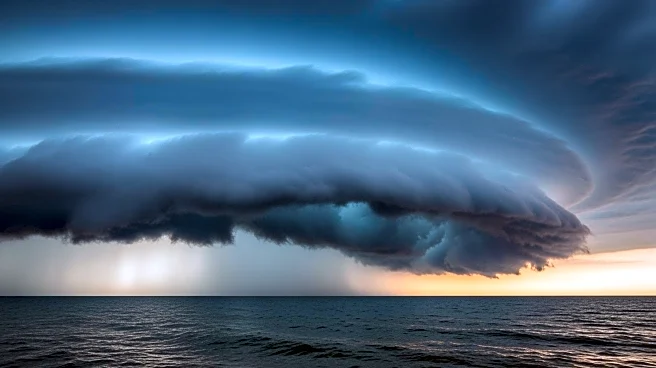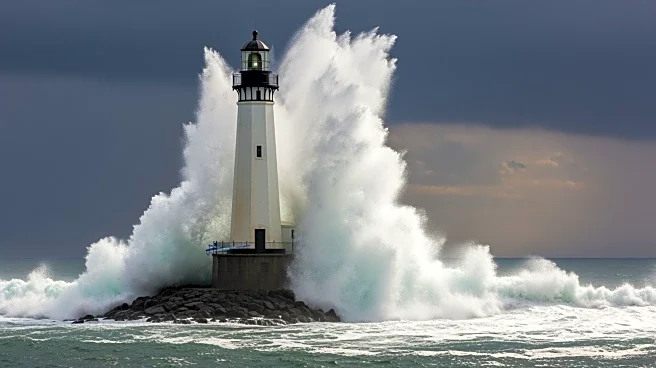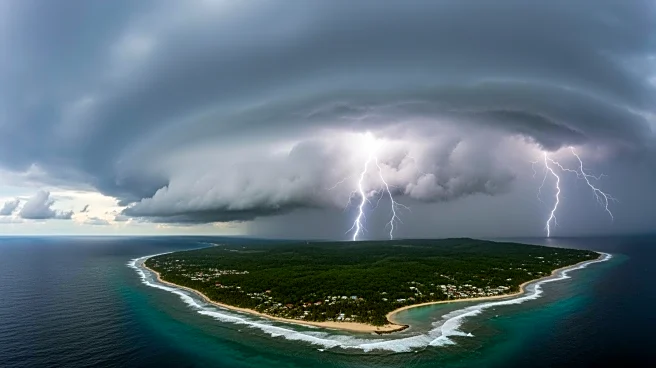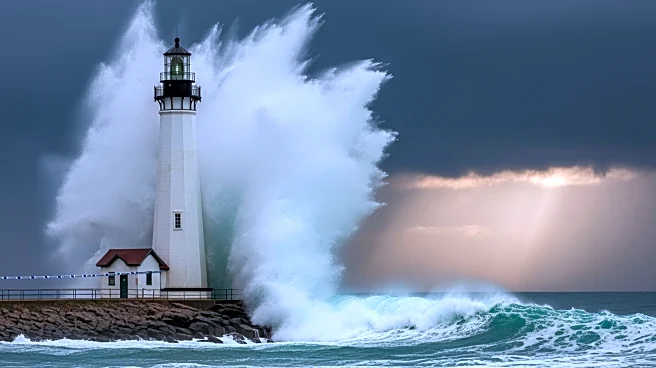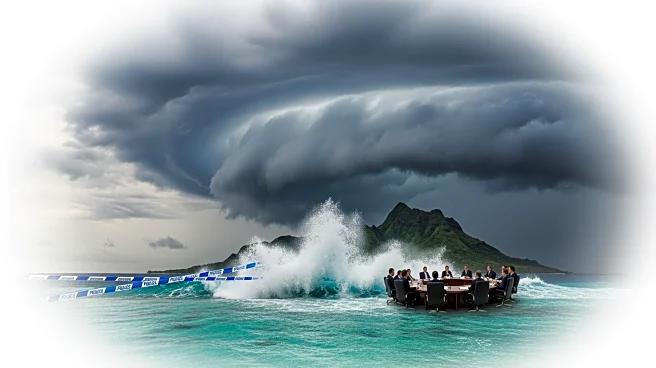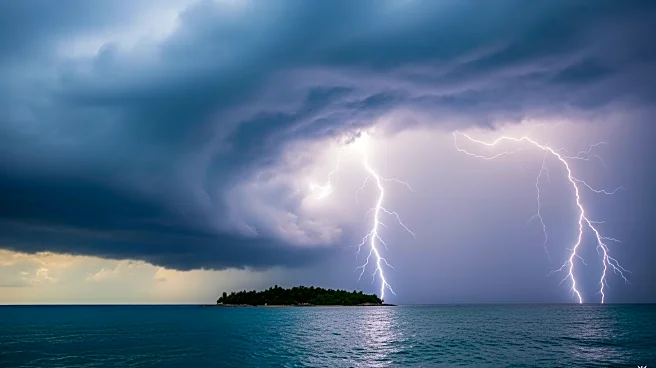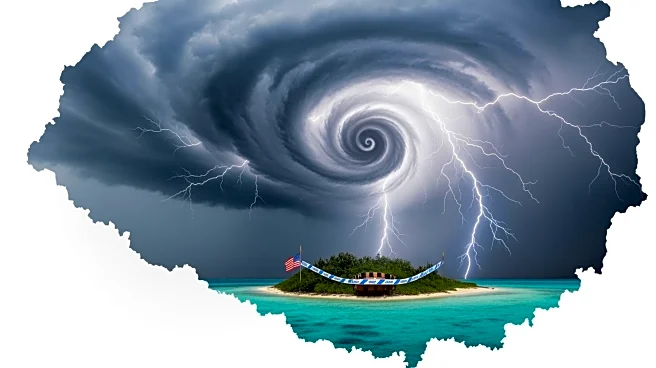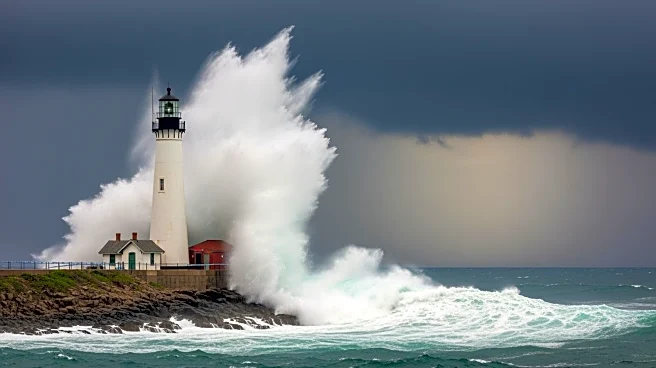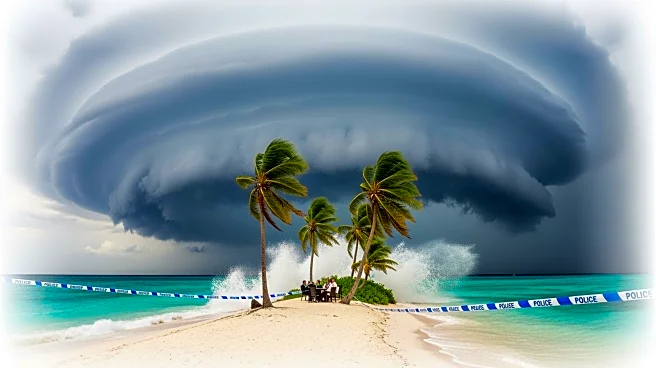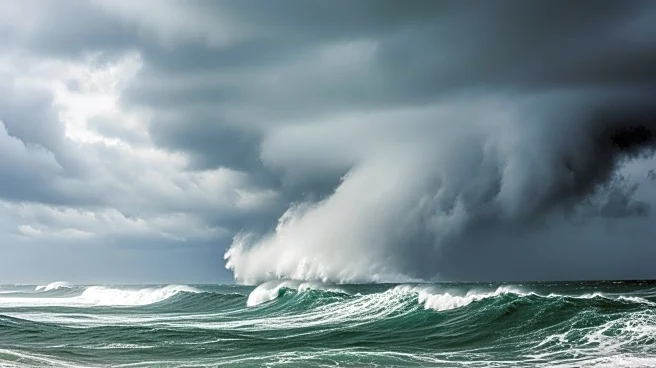What's Happening?
Hurricane hunters from the National Hurricane Center have reported an unusual phenomenon within Hurricane Melissa, where birds have become trapped in the storm's eyewall. This occurrence was noted in a vortex
data message sent on Monday afternoon, highlighting the presence of birds alongside details about the storm's speed, character, and location. Migrating birds often get caught in hurricanes, drawn in by the powerful winds, and find themselves unable to escape once they reach the calm eye of the storm. This situation can lead to flocks traveling vast distances with the storm. The presence of birds in Hurricane Melissa's eyewall underscores the ecological impact the storm is having on Jamaica, particularly affecting its biodiversity, including coral reefs, mangroves, and terrestrial ecosystems.
Why It's Important?
The trapping of birds in Hurricane Melissa's eyewall highlights the broader ecological consequences of the storm on Jamaica's environment. According to Donovan Campbell, a professor of environmental geography at the University of the West Indies, the storm poses a significant threat to Jamaica's biodiversity, potentially reversing years of progress in ecosystem restoration and conservation. The impact on coral reefs, mangroves, and terrestrial ecosystems could have long-term effects on the island's natural resources and environmental health. This situation emphasizes the vulnerability of ecosystems to extreme weather events and the importance of ongoing conservation efforts to mitigate such impacts.
What's Next?
As Hurricane Melissa continues to affect Jamaica, the focus will likely shift to assessing the damage to the island's ecosystems and implementing recovery and conservation strategies. Environmental experts and local authorities may need to collaborate on efforts to restore affected areas and protect remaining biodiversity. The situation could also prompt discussions on enhancing resilience against future storms and improving conservation practices to safeguard Jamaica's natural habitats. Monitoring the storm's progression and its ecological impact will be crucial in guiding these efforts.
Beyond the Headlines
The trapping of birds in Hurricane Melissa's eyewall serves as a reminder of the interconnectedness of natural phenomena and the delicate balance of ecosystems. It highlights the need for comprehensive climate adaptation strategies that consider the ecological implications of extreme weather events. The situation may also spark interest in further research on the behavior of wildlife during hurricanes and the development of measures to protect vulnerable species. Additionally, it underscores the importance of international cooperation in addressing climate-related challenges and supporting affected regions.
